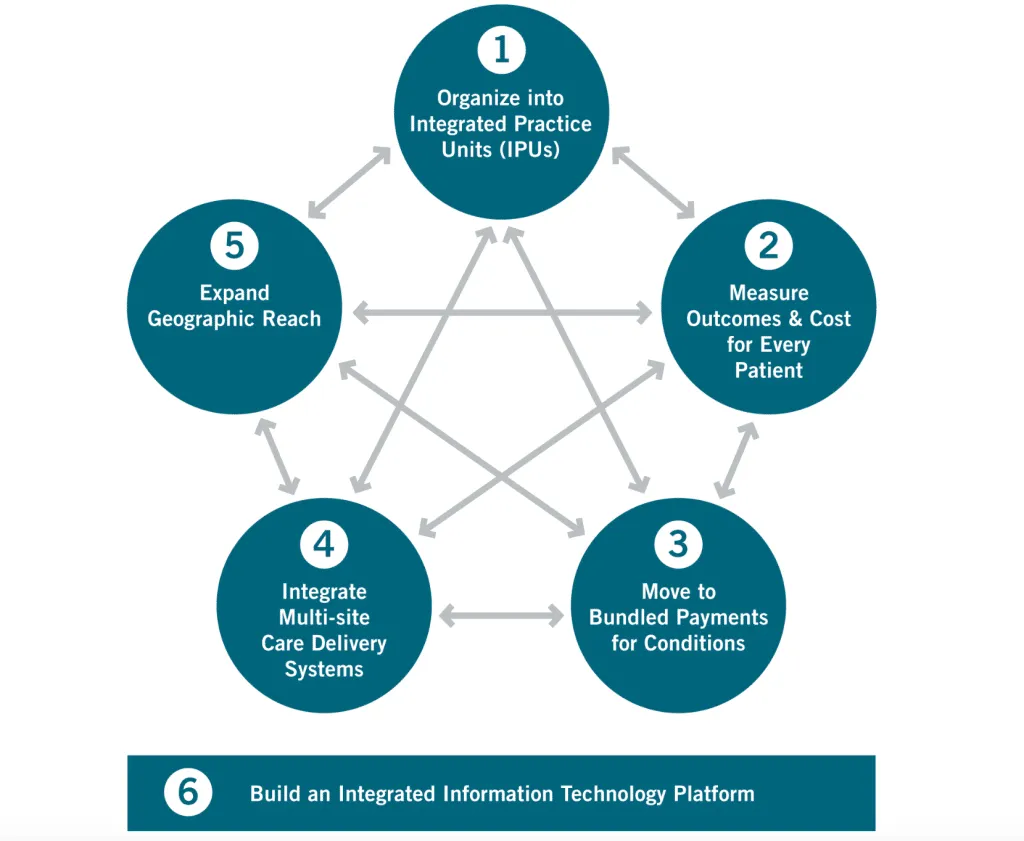HEALTHCARE DELIVERY
Patient-centered healthcare, commonly touted among some healthcare professionals and advocates, entails a collaborative effort for health services. In this system, patients are active in their care process. Burgeoning from this system comes the value-based approach. As described by the Institute for Strategy and Competitiveness, value-based healthcare involves delivering value to patients.
Harvard University Professor Michael Porter and Elizabeth Teisberg created a framework for implementing a value-based system in the book Redefining Health Care Creating Value-Based Competition on Results. The crux of this concept predicates value over quantity. To attain value for patients, they propose that health delivery models should:
- organize their structure around patients’ medical needs
- measure outcomes that matter to patients
- measure the costs associated with those possible outcomes
These concepts exist in an iterative process, as shown in the attached image.
HEALTH INFORMATION TECHNOLOGY
Resources from technological advancements for health information delivery aid the exchange of information between all parties invested in healthcare services. Health information technology can encompass diverse areas such as data collection, systems integration, and communication. For instance, electronic medical records (EMR) usually aggregate a patient’s pertinent medical information by written text. However, improvements in the EMR may alter how health facilities structure patient data.
Even more telling, health information technology can involve open communication between patients and providers by being a tool to connect patients within their care process. Digital patient education materials comprise a unique component in this. The technology is one of many that pairs well with a value-based care approach as it imparts knowledge to the patient about their health condition and care process.
Creating a patient-centered system requires re-structuring the way patients and providers receive and use information. Health information technology remains a pillar in this transformation of health services. With time, innovative technologies will make healthcare delivery more collaborative and effective for patients.





